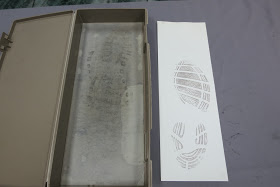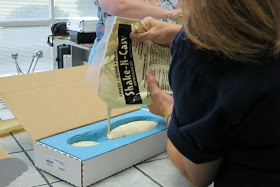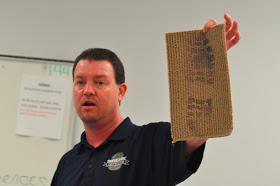I first read “Slaughterhouse-Five” in 1972, three years after it was published and three years before I published my own first novel. I was twenty-five years old. 1972 was the year of inching slowly toward the Paris Peace Accords, which were supposed to end the war in Vietnam, though the final, ignominious American withdrawal—the helicopters airlifting people from the roof of the American Embassy in Saigon—would not take place until three years later, at which point, by way of a small footnote to history, I had become a published writer.
I mention Vietnam because, although “Slaughterhouse-Five” is a book about the Second World War, Vietnam is also a presence in its pages, and people’s feelings about Vietnam have a good deal to do with the novel’s huge success. Eight years earlier, in 1961, Joseph Heller had published “Catch-22” and President John F. Kennedy began the escalation of the United States’ involvement in the conflict in Vietnam. “Catch-22,” like “Slaughterhouse-Five,” was a novel about the Second World War that caught the imagination of readers who were thinking a lot about another war. In those days, I was living in Britain, which did not send soldiers to fight in Indochina but whose government did support the American war effort, and so, when I was at university, and afterward, I, too, was involved with thinking about and protesting against that war. I did not read “Catch-22” in 1961, because I was only fourteen years old. As a matter of fact, I read both “Slaughterhouse-Five” and “Catch-22” in the same year, a decade later, and the two books together had a great effect on my young mind.
It hadn’t occurred to me until I read them that antiwar novels could be funny as well as serious. “Catch-22” is crazy funny, slapstick funny. It sees war as insane and the desire to escape combat as the only sane position. Its tone of voice is deadpan farce. “Slaughterhouse-Five” is different. There is much comedy in it, as there was in everything Kurt Vonnegut wrote, but it does not see war as farcical. It sees war as a tragedy so great that perhaps only the mask of comedy allows one to look it in the eye. Vonnegut is a sad-faced comedian. If Heller was Charlie Chaplin, then Vonnegut was Buster Keaton. His predominant tone of voice is melancholy, the tone of voice of a man who has been present for a great horror and lived to tell the tale. The two books do, however, have this in common: they are both portraits of a world that has lost its mind, in which children are sent out to do men’s work and die.
As a prisoner of war, age twenty-two, which is to say three years younger than I was when I read his story, Vonnegut was in the famously beautiful city of Dresden, locked up with other Americans in Schlachthof-Fünf, where pigs had been slaughtered before the war, and was therefore an accidental witness to one of the greatest slaughters of human beings in history, the firebombing of Dresden, in February of 1945, which flattened the whole city and killed almost everyone in it.
So it goes.
I had not remembered, until I reread “Slaughterhouse-Five,” that that famous phrase “So it goes” is used only and always as a comment on death. Sometimes a phrase from a novel or a play or a film can catch the imagination so powerfully—even when misquoted—that it lifts off from the page and acquires an independent life of its own. “Come up and see me sometime” and “Play it again, Sam” are misquotations of this type. Something of this sort has also happened to the phrase “So it goes.” The trouble is that when this kind of liftoff happens to a phrase its original context is lost. I suspect that many people who have not read Vonnegut are familiar with the phrase, but they, and also, I suspect, many people who have read Vonnegut, think of it as a kind of resigned commentary on life. Life rarely turns out in the way the living hope for, and “So it goes” has become one of the ways in which we verbally shrug our shoulders and accept what life gives us. But that is not its purpose in “Slaughterhouse-Five.” “So it goes” is not a way of accepting life but, rather, of facing death. It occurs in the text almost every single time someone dies, and only when death is evoked.
It is also deeply ironic. Beneath the apparent resignation is a sadness for which there are no words. This is the manner of the entire novel, and it has led to the novel being, in many cases, misunderstood. I am not suggesting that “Slaughterhouse-Five” has been poorly treated. Its reception was largely positive, it has sold an enormous number of copies, the Modern Library ranked it eighteenth on its list of the hundred best English-language novels of the twentieth century, and it is also on a similar list issued by Time magazine. However, there are those who have accused it of the sin of “quietism,” of a resigned acceptance, even, according to Anthony Burgess, an “evasion” of the worst things in the world. One of the reasons for this is the phrase “So it goes,” and it is clear to me from these critiques that the British novelist Julian Barnes wasright when he wrote in his book “A History of the World in 10 ½ Chapters” that “Irony may be defined as what people miss.”
Kurt Vonnegut is a deeply ironic writer who has sometimes been read as if he were not. The misreading goes beyond “So it goes,” and has a good deal to do with the inhabitants of the planet of Tralfamadore. As it happens, I am a great fan of Tralfamadorians, who look like toilet plungers, beginning with their mechanical emissary Salo, who, in an earlier Vonnegut novel, “The Sirens of Titan,” was marooned on Titan, a moon of the planet Saturn, needing a replacement part for his spaceship. And now comes the classic Vonnegut subject of free will, expressed as a comic science-fiction device. We learn in “The Sirens of Titan” that human history has been manipulated by Tralfamadorians to persuade the human race to build large messages to Salo, and to get our primitive ancestors to develop a civilization capable of doing so. Stonehenge and the Great Wall of China were some of the messages from Tralfamadore. Stonehenge read, “Replacement part being rushed with all possible speed.” The Great Wall of China said, “Be patient. We haven’t forgotten about you.” The Kremlin meant “You will be on your way before you know it.” And the Palace of the League of Nations, in Geneva, meant “Pack up your things and be ready to leave on short notice.”
Tralfamadorians, we learn in “Slaughterhouse-Five,” perceive time differently. They see that the past, present, and future all exist simultaneously and forever and are simply there, fixed, eternally. When the main character of the novel, Billy Pilgrim, who is kidnapped and taken to Tralfamadore, “comes unstuck in time” and begins to experience chronology the way Tralfamadorians do, he understands why his captors find comical the notion of free will.
It seems obvious, at least to this reader, that there is a mischievous ironic intelligence at work here, that there is no reason for us to assume that the rejection of free will by aliens resembling toilet plungers is a rejection also made by their creator. It is perfectly possible, perhaps even sensible, to read Billy Pilgrim’s entire Tralfamadorian experience as a fantastic, traumatic disorder brought about by his wartime experiences—as “not real.” Vonnegut leaves that question open, as a good writer should. That openness is the space in which the reader is allowed to make up his or her own mind.
To read Vonnegut is to know that he was repeatedly drawn to the investigation of free will, of what it might be and how it might or might not function, and that he came at the subject from many different angles. Many of his ruminations were presented in the form of works by his fictional alter ego, Kilgore Trout.
I love Kilgore Trout as deeply as I love the inhabitants of the planet Tralfamadore. I even own a copy of the novel “Venus on the Half-Shell,” in which the writer Philip José Farmer took a Trout story written by Vonnegut and expanded it to novel length. “Venus on the Half-Shell” is about the accidental destruction of the earth by incompetent universal bureaucrats, and the attempt by the sole surviving human being to seek answers to the so-called Ultimate Question. In this way, Kilgore Trout inspired Douglas Adams’s celebrated book “The Hitchhiker’s Guide to the Galaxy,” in which, you may recall, the earth was demolished by Vogons to make room for an interstellar bypass, and the sole surviving man, Arthur Dent, went in search of answers. Finally, the supercomputer Deep Thought revealed that the answer to life, the universe, and everything was, and is, “42.” The problem remains: What is the question?
In Vonnegut’s novel “Breakfast of Champions,” we learn about another Kilgore Trout story, “Now It Can Be Told,” written in the form of a letter from the Creator of the Universe addressed to the reader of the story. The Creator explains that the whole of life itself has been a long experiment. The nature of the experiment was this: to introduce into an otherwise wholly deterministic universe one single person who is granted free will, to see what use he makes of it, in a reality in which every other living thing was, is, and always will be a programmed machine. Everyone in the whole of history has been a robot, and the single individual with free will’s mother and father and everyone he knows are also robots, and so, by the way, is Sammy Davis, Jr. The individual with free will, God explains, is you, the reader of the story, and so God would like to offer you an apology for any discomfort you have endured. The end.
It’s worth adding one further detail. Throughout the many works by Kurt Vonnegut in which Kilgore Trout appears, he is consistently described as the worst writer in the world, whose books are utter failures, and who is completely and even contemptuously ignored. We are asked to see him simultaneously as a genius and a fool. This is not accidental. His creator, Kurt Vonnegut, was at once the most intellectual of playful fantasists and the most playfully fantastic of intellectuals. He had a horror of people who took things too seriously and was simultaneously obsessed with the consideration of the most serious things, things both philosophical (like free will) and lethal (like the firebombing of Dresden). This is the paradox out of which his dark ironies grow. Nobody who futzed around so often and in so many ways with the idea of free will, or who cared so profoundly about the dead, could be described as a fatalist, or a quietist, or resigned. His books argue about ideas of freedom and mourn the dead, from their first pages to their last.
Around the same time that I first read “Slaughterhouse-Five” and “Catch-22,” I also read another novel about a similar subject. That novel was “War and Peace,” which is longer than Heller’s book and Vonnegut’s book combined and isn’t funny at all. On that first reading of Tolstoy’s masterpiece, my twenty-five-year-old self thought, in summary: Loved peace, hated war. I was absorbed by the stories of Natasha Rostov, Prince Andrei, and Pierre Bezukhov, and found the extremely long descriptions of fighting, especially of the Battle of Borodino, pretty boring, to be frank. When I reread “War and Peace” perhaps thirty years later, I discovered that I felt exactly the opposite. The description of men at war, I thought, had never been bettered, and the greatness of the novel was to be found in those descriptions, and not in the somewhat more conventional stories of the leading characters. Loved war, hated peace.
Rereading “Slaughterhouse-Five,” I also found my valuation of the text changing. That younger self was strongly drawn to fantasy and science fiction, and sought out magazines called things like Galaxyand Astounding and Amazing, and was drawn to the work not only of the crossover giants, like Kurt Vonnegut and Ray Bradbury and Isaac Asimov and Ursula K. Le Guin and Arthur C. Clarke, but also to Mary Shelley and Virginia Woolf, whose “Frankenstein” and “Orlando,” respectively, are honorary members of the canon, as well as to the hardcore genre masters, such as James Blish, Frederik Pohl, C. M. Kornbluth, Clifford D. Simak, Katherine MacLean, Zenna Henderson, and L. Sprague de Camp. That young man, faced with Vonnegut’s masterpiece, responded most strongly to the sci-fi aspects of the book. To read it again has been to discover the humane beauty of the non-sci-fi parts, which make up most of the book.
The truth is that “Slaughterhouse-Five” is a great realist novel. Its first sentence is “All this happened, more or less.” In that nonfictional first chapter, Vonnegut tells us how hard the book was to write, how hard it was for him to deal with war. He tells us that his characters were real people, though he has changed all the names. “One guy I knew really was shot in Dresden for taking a teapot that wasn’t his. Another guy I knew really did threaten to have his personal enemies killed by hired gunmen after the war.” And later, when his characters, the ones with the changed names, arrive at Schlachthof-Fünf—Slaughterhouse Five, whose name he has not changed—he reminds us that he’s there with them, suffering right along with them:
Billy looked inside the latrine. The wailing was coming from in there . . . an American near Billy wailed that he had excreted everything but his brains. Moments later he said, “There they go, there they go.” He meant his brains.
That was I. That was me. That was the author of this book.
At one point Vonnegut quotes a conversation he had with a filmmaker called Harrison Starr, who would achieve a kind of modest renown as the executive producer of Michelangelo Antonioni’s movie about American hippies, “Zabriskie Point,” which was a huge commercial flop.
[Harrison Starr] raised his eyebrows and inquired, “Is it an anti-war book?”
“Yes,” I said. “I guess.”
“You know what I say to people when I hear they’re writing anti-war books?”
“No. What do you say, Harrison Starr?”
“I say, why don’t you write an anti-glacier book instead?”
What he meant, of course, was that there would always be wars, that they were as easy to stop as glaciers. I believe that, too.
Vonnegut’s novel is about that, about the inevitability of human violence, and about what it does to the not particularly violent human beings who get caught up in it. He knows that most human beings are not particularly violent. Or not more violent than children are. Give a child a machine gun, and he may well use it. Which does not mean that children are particularly violent.
The Second World War, as Vonnegut reminds us, was a children’s crusade.
Billy Pilgrim is an adult to whom Vonnegut gives the innocence of a child. He is not particularly violent. He does nothing awful in the war or in his prewar or postwar life, or in his life on the planet Tralfamadore. He seems deranged, and is mostly thought of as crazy, or as a near-simpleton. But he has a characteristic in common with many of the characters Vonnegut wrote throughout his career, and it is this characteristic that allows us to care for him, and therefore to feel the horror that he feels.
Billy Pilgrim is lovable.
If he were not lovable, the book would be unbearable. One of the great questions that faces all writers who have to deal with atrocity is, is it possible to do it? Are there things so powerful, so dreadful, that they are beyond the power of literature to describe? Every writer who faced the challenge of writing about the Second World War—and the Vietnam War, in fact—has had to think about that question. All of them decided they needed to come at the atrocity at an angle, so to speak, not to face it head on, because to do that would be unbearable.
Günter Grass, in “The Tin Drum,” used surrealism as his angle of entry. His character Oskar Matzerath, who stops growing because he can’t face the adult reality of his time, is one kind of fabulist being that allows the author to enter the horror. And little Oskar with his tin drum, drumming the beats of history, is, like Billy Pilgrim who has come unstuck in time, lovable. He is also, as the first sentence of “The Tin Drum” tells us, an inmate in a lunatic asylum. From opposite sides, German and American, these two deranged child-men give us our finest portraits of the great derangement of their time. Vonnegut, like Grass, combines the surrealism that has become the reality of his characters’ time with a detached, almost stunned tenderness that makes the reader feel fondly toward them, even as they stumble incompetently through life.
It may be impossible to stop wars, just as it’s impossible to stop glaciers, but it’s still worth finding the form and the language that reminds us what they are and calls them by their true names. That is what realism is.
“Slaughterhouse-Five” is also a novel humane enough to allow, at the end of the horror that is its subject, for the possibility of hope. Its final passage describes the end of the war and the liberation of the prisoners, who include Billy Pilgrim and Vonnegut himself. “And somewhere in there it was springtime,” Vonnegut writes, and in the last moment of the book, birds, once again, begin to sing. This cheerfulness in spite of everything is Vonnegut’s characteristic note. It may be, as I’ve suggested, a cheerfulness beneath which much pain is hidden. But it is cheerfulness nonetheless. Vonnegut’s prose, even when dealing with the dreadful, whistles a happy tune.
Fifty years after its first publication, seventy-four years after Kurt Vonnegut was inside Slaughterhouse-Five during the firebombing of Dresden, what does his great novel have to say to us?
It doesn’t tell us how to stop wars.
It tells us that wars are hell, but we knew that already.
It tells us that most human beings are not so bad, except for the ones who are, and that’s valuable information. It tells us that human nature is the one great constant of life on earth, and it beautifully and truthfully shows us human nature neither at its best nor at its worst but how it mostly is, most of the time, even when the times are terrible.
It doesn’t tell us how to get to the planet Tralfamadore, but it does tell us how to communicate with its inhabitants. All we have to do is build something big, like the Pyramids or the Great Wall of China. Maybe the wall that some individual whom I will not name is planning to build between the United States and Mexico will be read as an urgent message on Tralfamadore. The person who wants to build the wall will not know what the message means, of course. He is a pawn, being manipulated by a power greater than his to send the message in this time of great emergency.
I hope the message reads, “Help.”
This piece was adapted from a lecture delivered in April, in Indianapolis, to mark the fiftieth anniversary of “Slaughterhouse-Five.”















